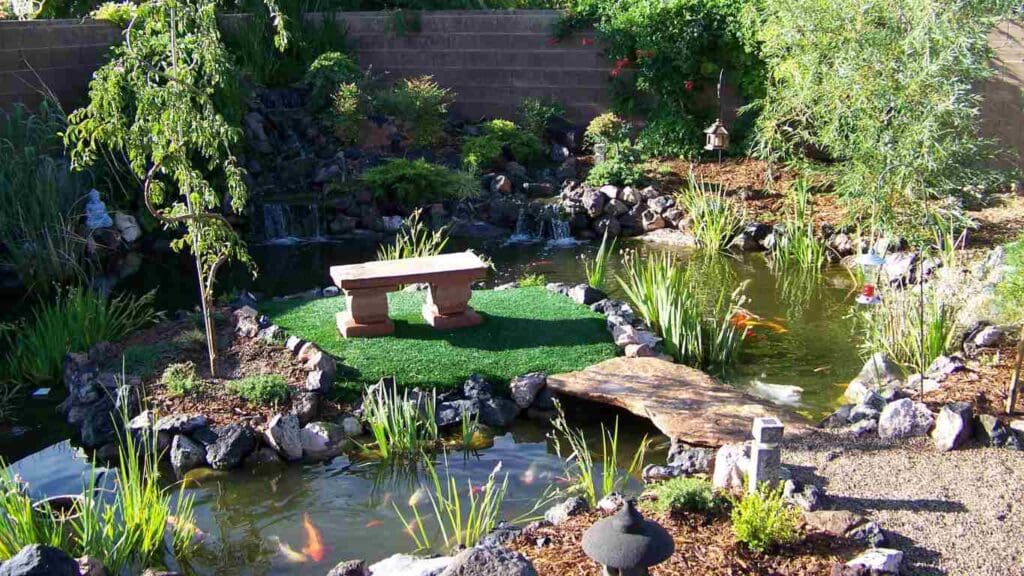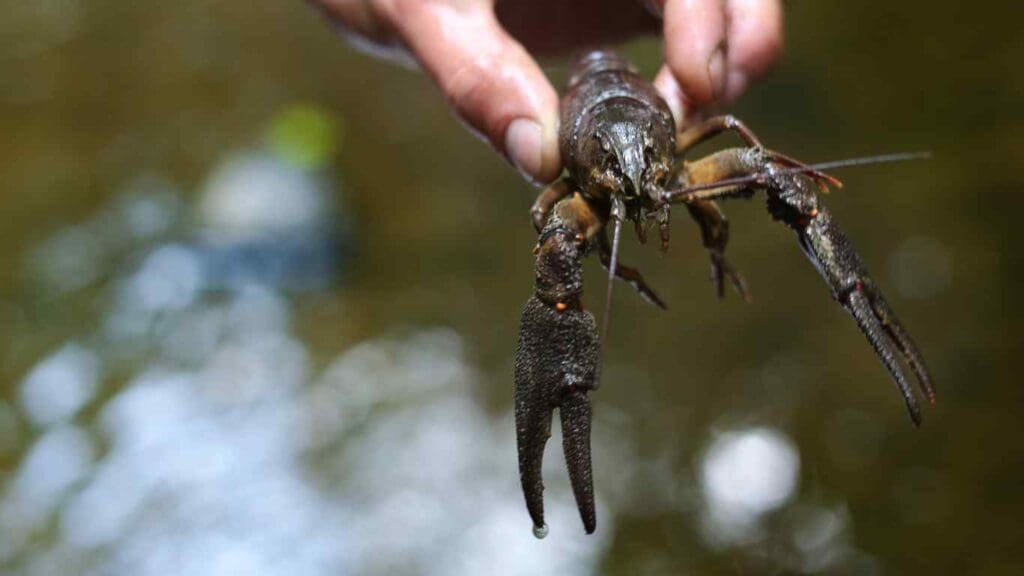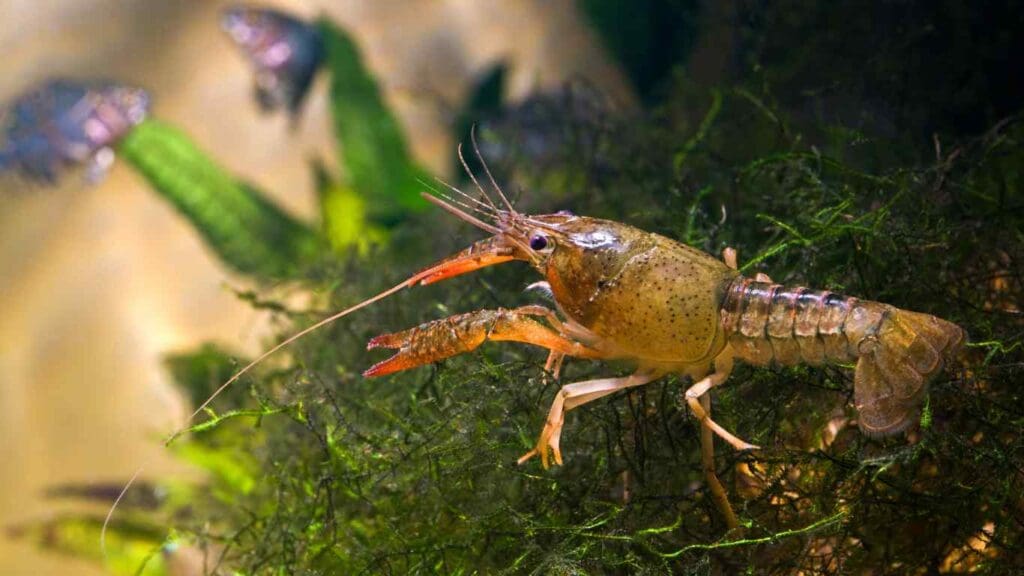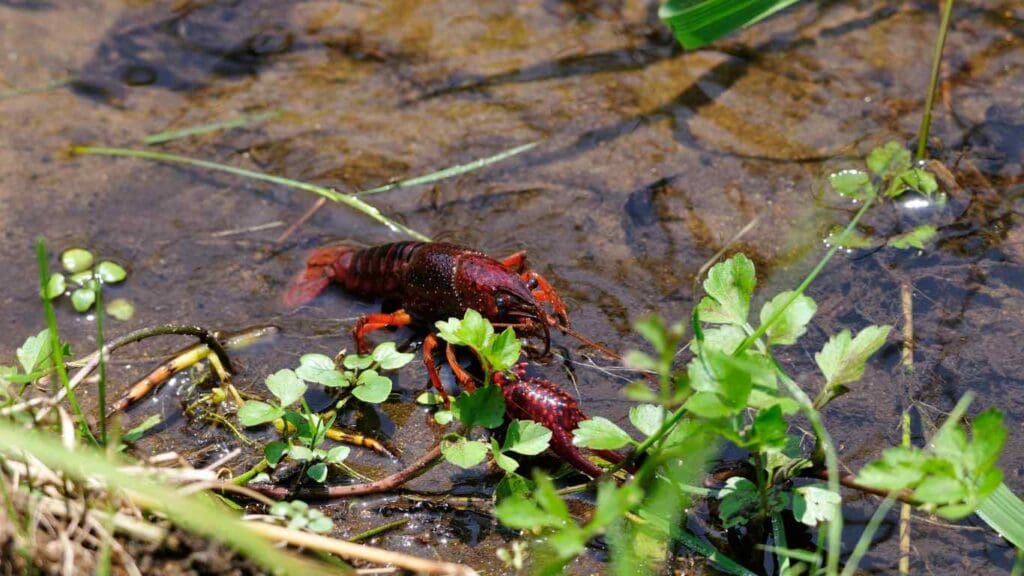If you’re a koi pond owner, you might be wondering if crayfish can live in your pond. While crayfish can coexist with koi, it’s important to understand the compatibility of these two species. Can Crayfish Live in a Koi Pond? In this article, we’ll explore the benefits and potential risks of adding crayfish to your koi pond, as well as the steps to introduce them into your pond.
To understand whether crayfish can live in a koi pond, it’s important to first understand the ecosystem of a koi pond and the behavior of crayfish. We’ll take a closer look at the ideal habitat requirements for crayfish and how they interact with other aquatic species. With this information, you’ll be able to make an informed decision about whether crayfish are a good fit for your koi pond.
Overall, adding crayfish to your koi pond can have many benefits, but it’s important to take the necessary precautions and understand the potential risks. With the right knowledge and preparation, you can successfully introduce crayfish into your koi pond and create a thriving aquatic ecosystem.
Can Crayfish Live in a Koi Pond?- Core Insights:
Understanding Crayfish and Koi Pond Ecosystem
Crayfish Basics
Crayfish are freshwater crustaceans that belong to the Cambaridae family. They are known for their hardy and adaptable nature, which makes them capable of surviving in various aquatic habitats, including koi ponds. Crayfish are omnivores, which means they feed on both plants and animals. They are also scavengers and will eat decaying matter.
Crayfish are known for their ability to burrow into the substrate of a pond, which can help aerate the soil and prevent the buildup of harmful gases. They also play an important role in controlling weed growth by nibbling on aquatic plants.
Koi Pond Ecosystem
A koi pond ecosystem is a delicate balance of living and non-living components that work together to create a healthy environment for koi and other aquatic life. The ecosystem includes the water, plants, fish, bacteria, and other microorganisms that live in and around the pond.
In a koi pond, it is important to maintain a balance between the various components of the ecosystem to ensure the health and well-being of the fish and other aquatic life. This includes monitoring the water quality, maintaining proper filtration and aeration, and providing adequate space for the fish and other organisms to thrive.


When considering adding crayfish to a koi pond, it is important to understand the impact they can have on the ecosystem. Crayfish can help control weed growth and aerate the soil, but they can also contribute to the depletion of oxygen in the water if their numbers are too high. It is important to monitor the crayfish population and take steps to prevent overpopulation.
Overall, crayfish can live in a koi pond, but it is important to understand their role in the ecosystem and take steps to maintain a healthy balance. By monitoring the water quality, providing proper filtration and aeration, and controlling the crayfish population, you can create a thriving ecosystem that supports the health and well-being of your koi and other aquatic life.
Compatibility of Crayfish in Koi Pond
If you are considering adding crayfish to your koi pond, it’s essential to understand their compatibility with the koi and the pond environment. Here are some factors to consider:
Behavioral Compatibility
Crayfish are generally peaceful creatures and can coexist with koi without any issues. However, it’s essential to keep in mind that crayfish are opportunistic feeders and might prey on smaller fish. Therefore, it’s best to avoid keeping small fish in the same pond as crayfish.
Additionally, crayfish are known to be territorial creatures and might fight with each other if they don’t have enough space to roam around. Therefore, it’s essential to provide adequate space for the crayfish to explore and hide.


Environmental Compatibility
Crayfish can survive in various aquatic habitats, but they have specific environmental requirements. Here are some factors to consider:
- Water Quality: Crayfish thrive best in slightly acidic water with a pH range of 6.5-7.5. Ensure your pond has proper aeration to maintain adequate oxygen levels, which are vital for crayfish survival.
- Temperature: Crayfish prefer water temperatures between 50°F (10°C) and 75°F (24°C). Ensure that your pond’s temperature is within this range.
- Hiding Places: Crayfish need hiding places to feel secure and safe. Provide them with rocks, logs, or artificial caves to hide in.
In brief, crayfish can coexist with koi in a pond, provided the pond is properly managed and maintained. Ensure that you provide enough space for the crayfish to roam and explore, maintain proper water quality, temperature, and provide hiding places for the crayfish to feel secure.


Benefits of Crayfish in Koi Pond
Adding crayfish to your koi pond can provide several benefits, including:
- Natural pond cleaning: Crayfish are scavengers and will eat dead plants and animals, as well as other organic matter that accumulates at the bottom of the pond. This helps to keep the pond clean and clear, reducing the need for chemical treatments.
- Improved water quality: Crayfish are known to be effective at reducing algae growth in ponds, which can help to improve the overall water quality. They also help to aerate the water by digging and burrowing, which increases oxygen levels and reduces the risk of stagnant water.
- Balanced ecosystem: Crayfish are an important part of the food chain in a pond and can provide a food source for other aquatic animals, such as fish and turtles. By introducing crayfish to your pond, you can create a more balanced ecosystem that supports a variety of different species.
- Fun and educational: Crayfish are fascinating creatures that can provide hours of entertainment for both children and adults. Watching them scuttle around the pond, burrow into the substrate, and interact with other animals can be a fun and educational experience.
It’s important to note that while crayfish can provide several benefits to your koi pond, they can also pose some risks if not managed properly. For example, they may eat young koi or damage plants if they become too numerous. It’s important to monitor their population and remove any excess crayfish as needed to maintain a healthy balance in your pond.


Get Advice from a Koi Pond Expert – Join our KPE Community!
Potential Risks and Challenges
Predation and Aggression
Crayfish are known to be aggressive towards smaller fish and other aquatic creatures, including koi. They have strong claws that can easily injure or kill smaller fish. In addition, crayfish are opportunistic feeders and may attack koi that are sick, injured, or weakened. Therefore, if you plan to keep crayfish in your koi pond, it is important to monitor their behavior closely and remove them if they become aggressive towards your koi.
Disease and Parasites
Crayfish can carry diseases and parasites that can be harmful to koi and other aquatic creatures. For example, they can transmit the crayfish plague, which is a fungal disease that can kill koi and other fish species. In addition, crayfish can harbor parasites such as anchor worms and fish lice, which can infect koi and cause health problems. Therefore, it is important to quarantine any new crayfish before introducing them to your koi pond and to regularly monitor the health of your koi.
To minimize the risks associated with keeping crayfish in your koi pond, here are some tips:
- Provide ample hiding places for your crayfish, such as caves, rocks, and hollow logs. This will help reduce their aggression towards your koi and provide them with a safe space to retreat.
- Ensure that your pond has enough oxygen to support both your koi and your crayfish. Crayfish can deplete oxygen levels in stagnant water, which can be harmful to your koi.
- Quarantine any new crayfish for at least two weeks before introducing them to your koi pond. This will help prevent the spread of diseases and parasites.
- Monitor the behavior of your crayfish closely and remove them if they become aggressive towards your koi.
- Regularly test the water quality in your koi pond and maintain it at optimal levels to minimize the risk of diseases and parasites.
KORDON Pond Rid-Ich Plus Disease Treatment, External Parasites and Fungal Infections for Koi
Steps to Introduce Crayfish into Koi Pond
Acclimatization Process
Before introducing crayfish into your koi pond, it is important to acclimate them to the new environment. Here are the steps to follow:
- Prepare a separate container with water from your koi pond.
- Place the crayfish in the container and let them sit for 15-20 minutes.
- Gradually add small amounts of water from your koi pond to the container, over the course of an hour.
- Once the container is filled with water from your koi pond, let the crayfish sit for another 20-30 minutes.
- Finally, release the crayfish into your koi pond.
Monitoring
After introducing crayfish into your koi pond, it is important to monitor their behavior and ensure that they are not causing any harm to the koi or the pond ecosystem. Here are some things to keep in mind:
- Keep an eye on the crayfish and make sure they are not attacking the koi or other pond inhabitants.
- Monitor the water quality regularly, especially the pH levels, temperature, and ammonia levels.
- Check for any signs of stress or disease in the crayfish and address them promptly.
- Remove any dead crayfish from the pond immediately to prevent contamination.


Maintenance
Maintaining a healthy environment for both the crayfish and koi is crucial for their survival. Here are some maintenance tips:
- Provide ample space for both the crayfish and koi to roam and explore.
- Keep the water quality in check by performing regular water changes and using appropriate filtration systems.
- Avoid overfeeding the koi, as excess food can lead to increased waste and poor water quality.
- Remove any excess debris or organic matter from the pond to prevent buildup and maintain a healthy ecosystem.
By following these steps and tips, you can successfully introduce crayfish into your koi pond and maintain a healthy and harmonious environment for both species.


Join Us and Get a FREE eBook with Everything You Need to Know to Build Your Koi Pond
Final Remarks
In the end, crayfish can live in a koi pond, but there are several factors to consider before adding them to your pond ecosystem. Crayfish require adequate space to roam and explore, and they prefer to remain in a particular area, which can lead to oxygen depletion at greater depths. Therefore, it is essential to ensure that the pond has enough oxygen supply to meet the needs of both koi and crayfish.
Additionally, crayfish can be aggressive towards other pond inhabitants, including koi, and may attack and eat small fish. Therefore, it is crucial to monitor the crayfish’s behavior and remove any aggressive individuals promptly.
If you decide to add crayfish to your koi pond, it is essential to provide them with hiding places, such as rocks or plants, to make them feel secure. It is also important to feed them a varied diet and avoid overfeeding, as excess food can lead to poor water quality and health problems for both crayfish and koi.
Overall, adding crayfish to your koi pond can be a unique and fascinating addition to your pond ecosystem. However, it is crucial to consider the potential risks and take the necessary precautions to ensure the health and safety of all pond inhabitants.
Frequently Asked Questions
What do crayfish eat in a pond?
Crayfish are omnivores and will eat anything they can find in a pond. They feed on aquatic plants, algae, insects, small fish, and even dead animals. In a koi pond, they will likely eat leftover fish food, algae, and any dead fish or other organisms.
How often do crayfish reproduce in a pond?
Crayfish can reproduce rapidly in a pond if the conditions are right. They can lay hundreds of eggs at a time, and the eggs hatch in about three to four weeks. The young crayfish will reach maturity in about six months and start reproducing themselves.
Can crayfish grow in koi ponds?
Yes, crayfish can grow in koi ponds if the conditions are suitable. They require adequate space to roam and explore, and the pond should be spacious enough to accommodate both the crayfish and koi comfortably.
Do koi fish eat crayfish?
Koi fish are omnivores and will eat almost anything they can fit in their mouths, including crayfish. However, if there is enough food available, they may not bother the crayfish.
Will crayfish clean a koi pond?
Crayfish can help clean a koi pond by eating leftover food, algae, and other organic matter. However, they may also disturb plants and other organisms in the pond, so it’s important to monitor their behavior.
Can crayfish live fully submerged in a koi pond?
Yes, crayfish can live fully submerged in a koi pond. They are adapted to living in water and can breathe through their gills. However, they also need access to air to survive, so they will come to the surface periodically to breathe.
 1 (509) 228-8646
1 (509) 228-8646




